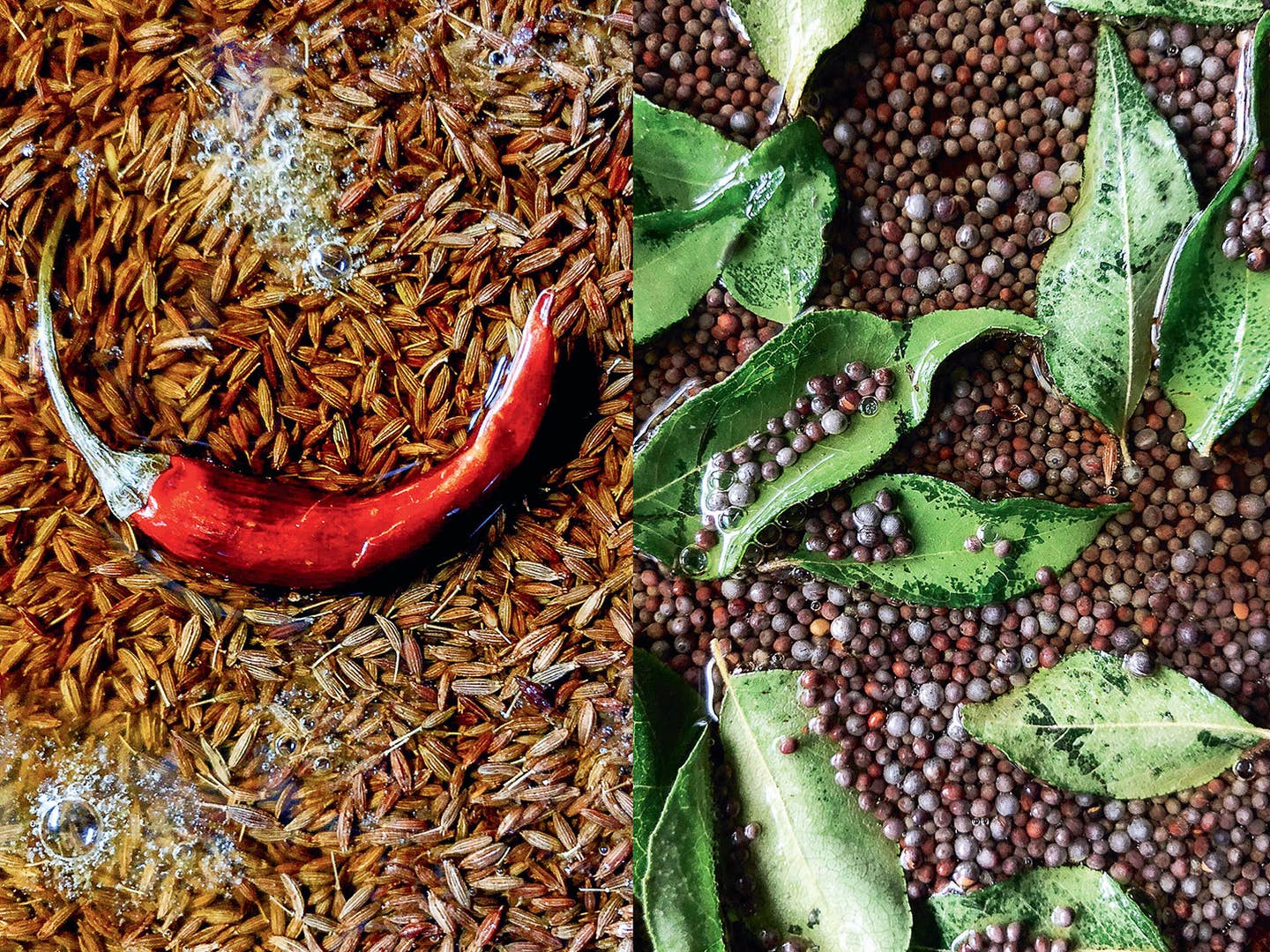
How To Start Cooking More Indian Food
Ingredients, spices, techniques, and recipes to make a variety of Indian dishes an everyday endeavor
Indian food is my everyday food. Dal, rice, and sabzi are the staples my mom used to make for our family when she came home from busy days at work and had to put dinner on the table in 20 minutes. These are the dishes that I cook when I come back from vacation and need to reset.
In the U.S., Indian cooking is often misunderstood to be complicated, time-consuming, and overly heavy. Unlike most takeout tikka masala, the Indian food you'll find cooked in people's homes is not like that at all—it's bright, vibrant, and, like any cuisine, a mix of lighter fare and richer indulgences. And it's not rocket science, either; learn a few fundamentals, and you can seamlessly cook with Indian flavors at home. It's important to remember, though, that India is a vast, varied country, and the food is heavily regional: There are so many facets to Indian cuisine. But in an effort to help break down Indian cooking into more manageable parts, here's a rubric with a few key techniques and ingredients from the food that I grew up eating (as seen in my cookbook, Indian-ish). With a little patience, it should make flavorful dals (lentil soups) and sabzis (cooked vegetable dishes) a weeknight staple for you, too.
PART 1: BUILD YOUR PANTRY
Rice & Roti
For me, there are two fundamental carbs in Indian cooking: rice and roti. This absolutely varies among regions, and there are many wonderful breads that figure heavily in Indian cuisine (Paratha! Naan! Kulcha! And more!), but roti is perhaps the most standard. For rice, if you're making Indian food, it's best to go with long-grain white basmati. The dainty, lengthy grains don't get soggy under the weight of whatever dal or sabzi you are putting on top of them, and they have a beautifully nutty flavor. When it comes to Indian breads, naan seems to get all of the glory, but the truth is that not that many home cooks are actually making it at home. They're making roti (also known as chapati), a simple round bread made of wheat flour, water, salt, and a little oil. Roti is a sturdy, distinctly savory-tasting workhorse of a bread that's as ideal for sopping up remnants of a gravy as it is for adding in little bits to a dal for texture. Buy roti in any Indian grocery store, or do as my mom does, and use good-quality whole-wheat tortillas instead.
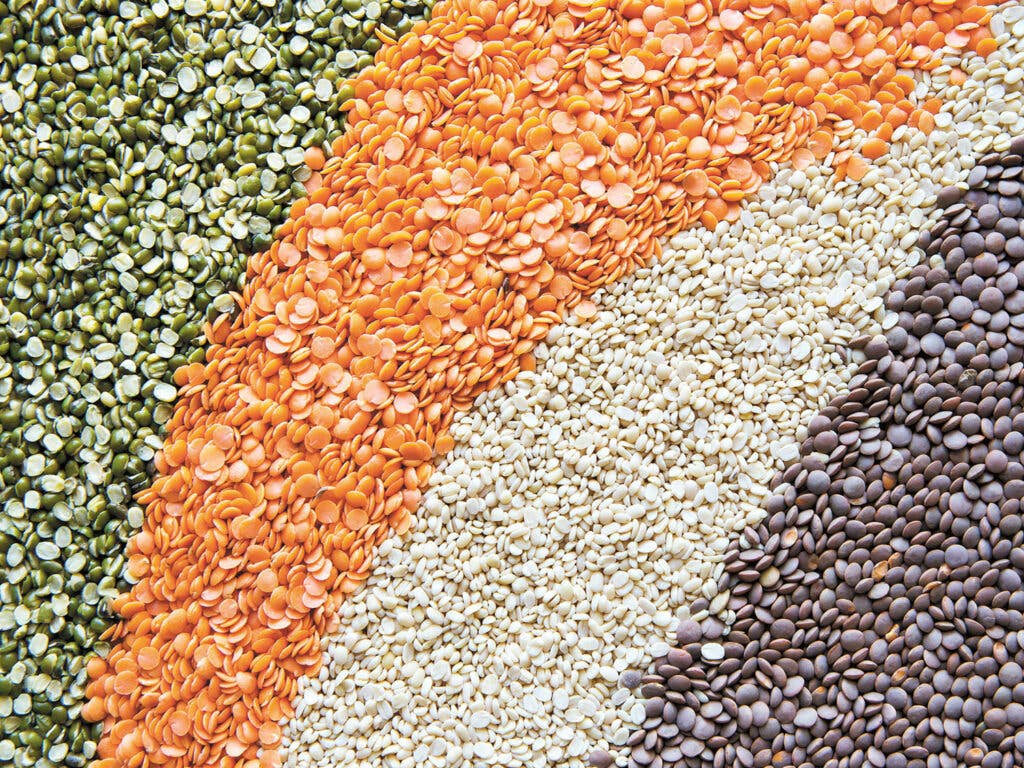
Lentils
Because many people in India are vegetarian, lentils—usually in the form of dal—are often a centerpiece of meals. But not all lentils are created equal; there are countless varieties, each with its own unique flavor and texture. One of my favorites is masoor dal (also known as red lentils or split and dehusked pink lentils): a smooth, soup-friendly variety perfect for a quick weeknight meal. It cooks quickly and provides body to any broth. Aside from dal, try blitzing cooked masoor dal with some herbs and lime into a dip (they get nice and smooth very quickly). Another favorite is split green mung beans, which have an earthy, somewhat vegetal taste. They work best cooked with rice in khichdi, a savory, comforting porridge. They also make a great addition to salads. There's also urad dal (also known as ivory white lentils, or split and dehusked black gram lentils). These are the unsung hero of the lentil family. They don't actually feel like a lentil at all; they have this rice-like look and taste to them but with a little extra chew. It's one of the rare varieties that I believe tastes even better dry than in a soup. My personal favorite variety is whole masoor dal (also known as kali masoor dal, sabut masoor dal, or brown lentils). They have a rich, buttery taste when cooked, without needing to add anything else. They're sort of like a French lentil, but with the best qualities turned way, way up.
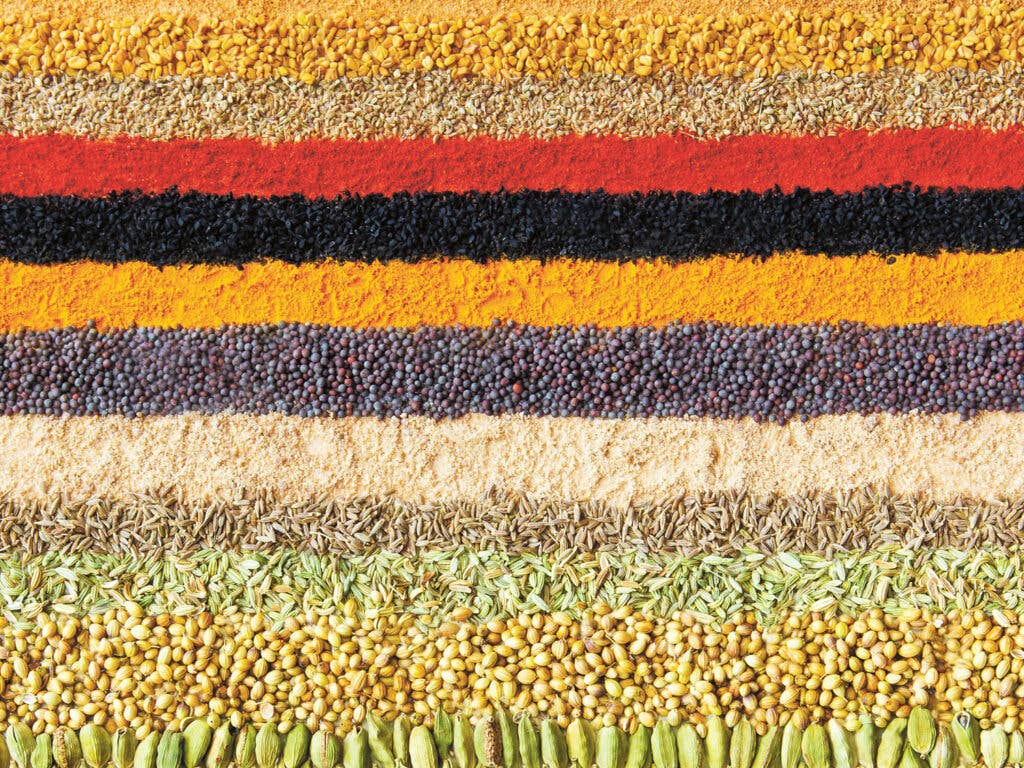
Spices
Spices can seem like the most intimidating part of Indian cooking—there are so many to choose from. Stocking your pantry with this small sample of essentials will give you a head start on most Indian dishes, and you can build with supplementary spices—like fenugreek seeds, ajwain seeds, or asafetida—as you expand your repertoire of dishes. Just don’t forget the rule of thumb: Always start with whole spices whenever you can, and toast them (either dry or in oil) to best activate their flavors and aromas.
- Cumin Seeds: Cumin seeds are the building block of many north Indian dishes, and will often be the sole seasoning component. Their warm, nutty, smoky taste can easily stand on its own. Sauté cumin seeds in oil, add practically any vegetable, from cauliflower to carrots to green beans, and you've got an easy sabzi. Cumin seeds tempered in oil (this technique is also known as chhonk) are also an excellent topper for a dal or the beloved savory yogurt condiment known as raita.
- Coriander Seeds: Similar to cumin seeds and typically best used in freshly ground form, coriander seeds are a warm spice that provides an incredible, almost citrusy aroma. Use coriander seeds in any kind of hearty gravy, like the one for saag paneer, or as a seasoning for rice.
- Cardamom: Cardamom pods have a gentle sweetness that works well in both savory dishes (particularly tomato gravy–based ones, like matar paneer) and sweet ones, like shrikhand, a cardamom yogurt. Also of note: Cardamom pods can be munched whole as a natural breath freshener.
- Turmeric: By now, you have probably heard about turmeric. But unlike what trendy coffee shops may lead you to believe, in Indian cooking, turmeric is rarely a flavoring component in and of itself, but rather a means of adding color and an earthy baseline to a dish. Turmeric is the kind of spice that often plays a supporting role in terms of flavor, but without it, dals and sabzis seem to lack the depth that's characteristic of most Indian dishes.
- Mustard Seeds and Curry Leaves: These are separate ingredients, but in my house, they are often used together. Mustard seeds and curry leaves both have an appealingly earthy flavor, and when used in cooking, they provide dishes with a taste that I can only describe as freshly buttered popcorn.
Aromatics
To me, no Indian dish is complete without at least one of the following: ginger, onion, garlic, and cilantro. Ginger, onion, and garlic function as the Indian "holy trinity," a source of pungent, savory flavor that grounds most dishes. While there are some religions in India that do not permit the consumption of root vegetables, for those who are open to them, sautéing some combination of ginger, onion, and garlic is a great way to build an aromatic base for any kind of sabzi or rice, or the classic Mumbai street food dish, pav bhaji. For a fragrant, flavorful punch at the end of cooking, look to fresh cilantro, which uses its fresh, zingy brightness to cut through richly spiced dishes.
PART 2: TIPS & TECHNIQUES TO TRY
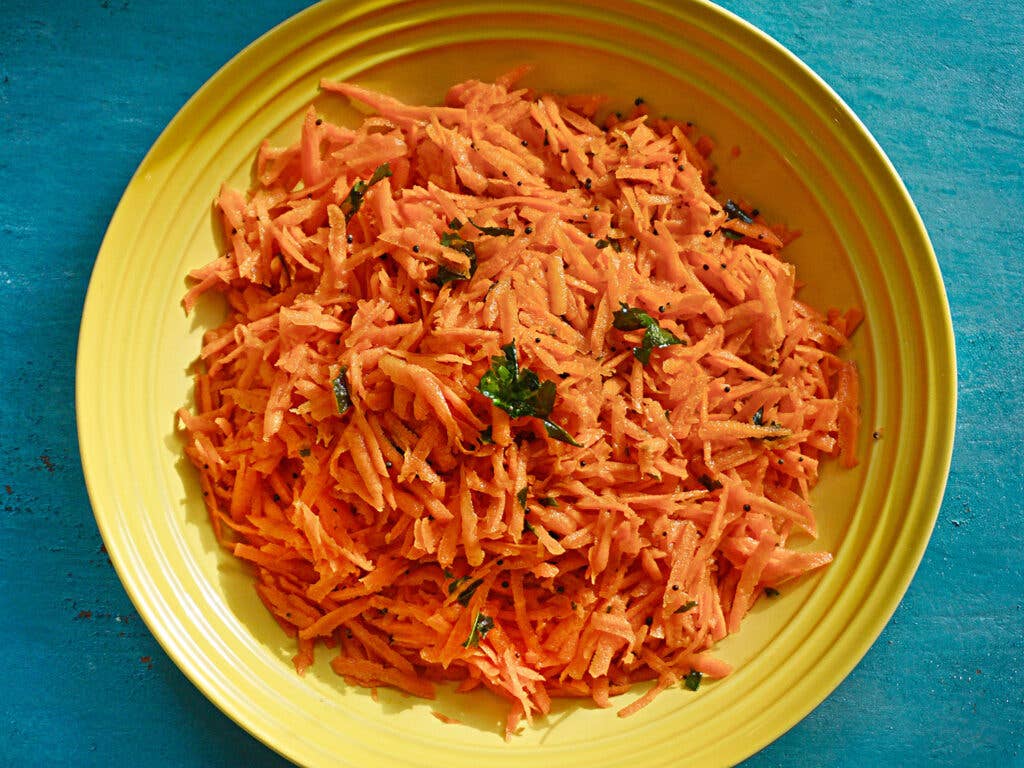
Start with Chhonk
This is one of my all-time favorite cooking techniques, based on the principle of toasting spices to bring out the maximum amount of flavor. Chhonk is a method of tempering spices in oil or ghee to create a flavor-infused sauce that can be poured over a dal, raita, sabzi, or even raw vegetables to provide a shot of complexity and richness.
Try: Mustard Seed and Curry Leaf Carrot Salad, a simple vegetable dish seasoned with chhonk
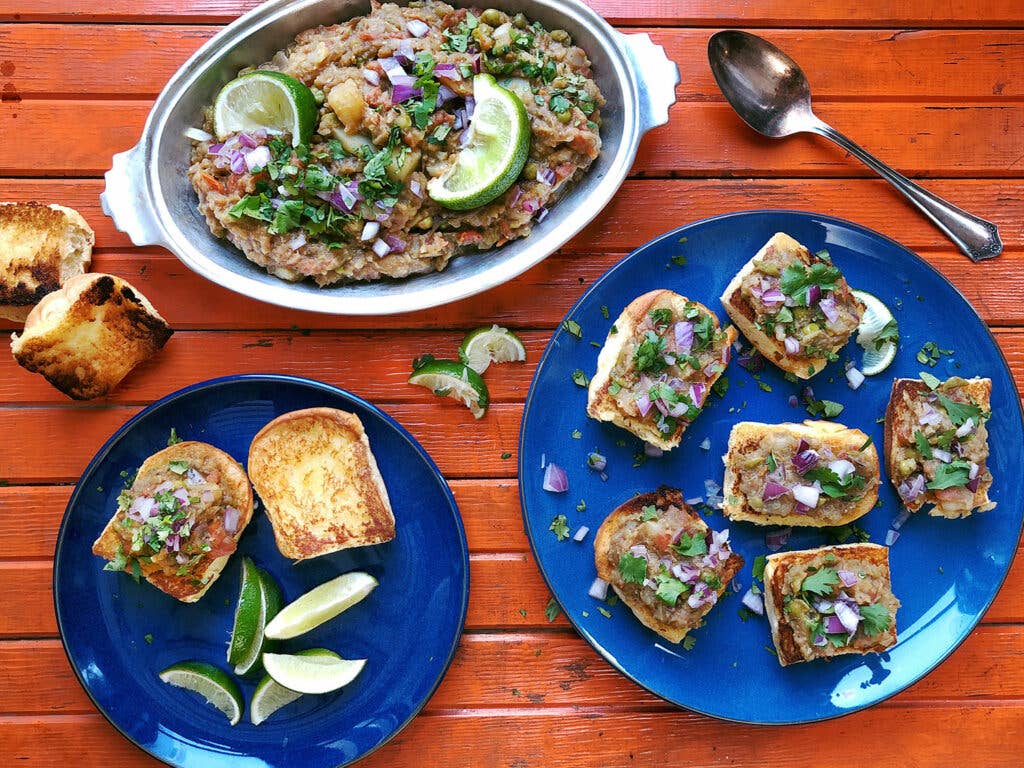
Don't Shy Away from Acidity
In a cuisine full of hearty flavors and warming spices, I cannot emphasize enough the importance of acid. Lemon and lime are the most standard means of adding acidity to a finished dish. But a drizzle of yogurt—over some aloo gobi, say, or a dal—also works nicely. Another trick? Amchur. Also known as dry mango powder, the spice has a pleasant tang that makes it a great source of acid, or even just a good substitute when you don't have lemons or limes on hand.
Try: Pav Bhaji, soft bread rolls served with a thick gravy made from mashed vegetables, ginger, and garlic, and topped with lots of lime and cilantro
Hyderabadi-Style Lentil Stew (Khatti Dal)
Indian culinary expert Madhur Jaffrey experienced a version of this tarka—a combination of fried spices and aromatics stirred into a soupy dal—while visiting the South Indian city of Hyderabad. It is soured with tamarind and seasoned with curry leaves and mustard seeds.
Learn to Turn Lentils into Dal
Learn to make dal, and you have the building block of a wholesome, filling meal. My comfort food is dal chawal—or dal over a bowl of rice. The basic formula for the dal I grew up eating is lentils + water + turmeric + salt, with lime juice and chhonk added over the top.
Try: Khatti Dal, a classic Hyderabadi-style lentil stew flavored with tamarind paste, mustard seeds, and curry leaves
Make Chutney
Chutneys are the all-purpose super-sauces of Indian food. They can be dipping sauces for parathas, or garnishes for sabzis. They are bright, tangy, and spicy all at once—and best of all, my mom has a formula for turning any herb, from cilantro to parsley to basil, into a chutney. Ready? Start with a bunch of herbs (stems included, those help get the blender going), and add fresh lime juice, a serrano chile, and a pinch each of salt and sugar. That’s it. Once you master the basic chutney, you can get a little more creative, with additions like ginger, coconut, or peanuts.
Try: Cilantro-Mint Chutney, a bright and herbaceous sauce to serve alongside your favorite rich Indian dishes
Keep Reading
Continue to Next Story










